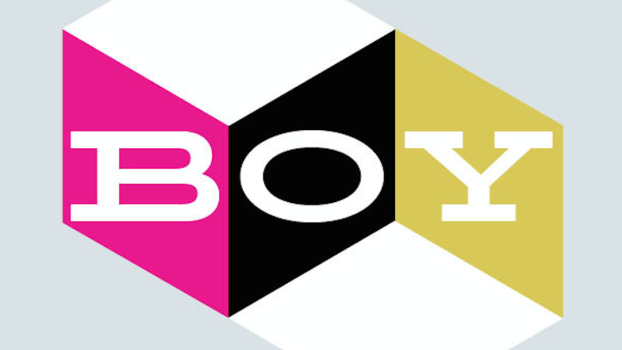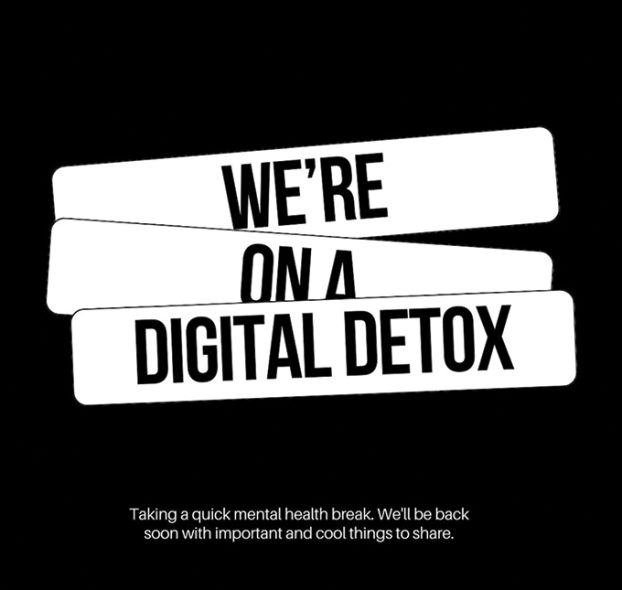The Cult Collective is a consumer engagement agency that runs the well-attended The Gathering every year in February. It’s positioned itself as a business that can break marketers of the bad habits that endure from the days of four TV channels, robust print advertising and pre-Google word-of-mouth. In this excerpt from the third edition of their book FIX: Break The Addictions That Are Killing Brands, CEO Chris Kneeland, president Ryan Gill and senior strategist Rob Howard throws stones at one of the pillars of modern marketing philosophy.
Consider the dramatic paradigm shift that happened centuries ago when the notion that the earth was flat was discredited. The impact on society when people learned that their fundamental belief about the world they lived on was wrong was profound. The revelation sent shock waves across a host of institutions. But some early adopters quickly accepted this new reality and ventured out to discover new lands, new peoples, and new fortunes. Those who clung to the old flat-earth paradigm missed out on many of the spoils associated with this new realization. Eventually, the facts became so indisputable that old, entrenched beliefs collapsed, and a new world order was established.
Marketers adhere to an advertising paradigm that is just as false as believing in a flat earth. It’s called The Purchase Funnel.
The purchase funnel theory was first published in 1898. It underwent its last major refinement in 1924. Astonishingly, the funnel hadn’t evolved since then despite all the advances in technology and media, along with major demographic, economic, and consumer empowerment shifts. Most corporate executives, especially those with marketing degrees, grew up learning that this funnel concept was the best way to go to market.
With its seven linear steps, the funnel analogy overemphasizes the importance of awareness. Since awareness and familiarity are at the top and represent over 60 percent of the funnel, too many marketing executives spend over 60 percent of their marketing resources trying to achieve them. But their fixation on attracting new audiences, largely via advertising and discounts, means they aren’t spending appropriate resources on the weightier matters impacting consumer engagement, such as flawlessly delivering on their core value propositions and compelling differentiators, or building bridges to improve engagement with key customer segments pre-, during-, and post-purchase.
In 2010, a team at Harvard University studied 20,000 consumers across three countries shopping for five different product categories — cars, electronics, cosmetics, insurance, and telecommunications — in an effort to validate if the purchase funnel framework still held true. To their surprise, not one aspect of that paradigm remained relevant. The Harvard team reported on their findings and introduced the marketing world to an entirely new buying framework. The implications of this are nothing less than earth-shattering because they radically shift the tectonic plates beneath the ad world and those who support awareness-building marketing campaigns.
Brand stewards who continue to cling to the purchase funnel marketing paradigm need to recognize the world has changed.
THE CURRENT BUYING CYCLE

This diagram illustrates the actual customer buying cycle of the twenty-first century introduced by Harvard. Gone is the metaphor of a funnel with seven linear steps. Only four stages matter to consumers. We’ll quickly discuss each one.
RETHINK WHO BRANDS TARGET, WHEN AND HOW
Most brands do not need to push messages to pique consumers’ awareness of the goods or services they offer. Today’s consumers are very savvy at finding what they want, as well as tuning out most of the advertising begging for their attention. Besides, the majority of brands that can afford mass advertising are already well-known enough that much of what their marketing teams spend time and money doing is either unnecessary or unwelcome. The whole concept of targeting audiences has diminished significantly — cult brands are the ones that become adept at making targets of themselves instead.
Marketers also need to better leverage the role of recency. Consumers are bombarded with so many marketing stimuli on a daily basis they can no longer process them all. Therefore, only when a person is “in market” for something should advertisers turn on their communications. Obviously that is easier said than done, but it’s why Google has become one of the most profitable companies on the planet. Search engine marketing excels at identifying when buyers are actively in the market to buy. But other ways exist to hone in on active buyers beyond search engine marketing.
For example, consider Select Comfort, makers of the Sleep Number bed. Drive around town on any given weekend and you’ll hear numerous radio commercials for mattress companies. They essentially “carpet bomb” the airwaves with ads, because they have no idea which listeners are in the market to buy a new mattress. But rather than shout above the noise of its competitors and participate in this radio commercial arms race, Select Comfort employs alternative marketing tactics to identify when people are actively in the market to purchase a new bed. The company has gotten really smart at leveraging data to identify purchase catalysts, such as moving, graduating, getting married, being pregnant, or suffering from back pain. Select Comfort also creates showrooms where people can demo the product and leave information about themselves behind as sales leads. Select Comfort is now expert at direct-response models and sending versioned collateral based on need and immediacy. This more targeted approach to mass advertising contributed to significant sales growth, going from less than $600 million in 2010, to more than $960 million in 2013.
EDUCATION INCREASES CONSUMERS’ WILLINGNESS TO CONSIDER ALTERNATIVES
Consumers actually add brands to their consideration set as they shop for what they want. For example, when car shopping, the average person begins the process with three distinct models in mind. But by the end of Step 2, the consumer ends up with at least six possible choices. This fact blows up the notion of a tapered funnel that starts big and gets smaller over time.
Given the amount and type of information available, consumers tend to reconsider what they thought was important, and open their minds to other ideas as they shop. For example, consumers might start the car-buying process thinking they want a simple four-door, mid-priced sedan. But as they research and become educated on the category, other factors become important, like warranty, financing, safety rating, resale value, and fuel economy.
Once customers become more educated, they begin to shift their priorities and seek out additional help to make good decisions. Considering more products further along into the decision-making process makes sense with big purchases like a car, but research also shows this same phenomenon exists with highly commoditized packaged goods, like toothpaste and toilet paper.
The biggest difference is time. Consumers may take months to purchase the perfect car, but will only spend an extra minute in the grocery aisle to make a decision about toothpaste. This new reality, about how and when people actually make purchase decisions, requires brand stewards to perfect new skills known as “inbound marketing.
Inbound marketing includes everything from call centers to podcasts, online videos to ratings and reviews, and social media content strategies to virtual showrooms. It includes compelling visuals in the form of infographics, thought leadership pieces like white papers, and speaking events—all of which position brands as experts within their space. These are the tricks of the trade that 21st century marketers need to master.
Inbound marketing strategies are hugely impactful during multiple phases of the customer journey. You don’t have to excel at them all, but you need to do the ones your consumers expect most from you and do them with the same degree of craftsmanship as your highly polished print ads or TV spots. That means adding or redeploying resources, and elevating the importance of certain roles within your organization. Companies today are still in vital need of Art Directors, Copy Writers, Media Strategists, and Digital Developers, but their time and talents should be repurposed into creating better owned and earned assets, rather than proliferating paid media campaigns.
Consider this example: Zappos is a multibillion-dollar online retailer of shoes and apparel, and one of the biggest dotcom success stories of the past decade. They do very little mass advertising. Instead, they focus on their website and customer care to create what they call “WOW” experiences.
 Assume you are interested in buying a pair of Born Sandals. If you go online to research prices and find a retailer, Zappos will appear all over your Google search results. Yet the company does not pay for many keywords. Instead, it invests in optimizing its website content, thereby raising the brand’s organic search engine visibility, making it easier for consumers to find it over competitors. When people see these organic search results and click on them, it costs Zappos nothing for the traffic.
Assume you are interested in buying a pair of Born Sandals. If you go online to research prices and find a retailer, Zappos will appear all over your Google search results. Yet the company does not pay for many keywords. Instead, it invests in optimizing its website content, thereby raising the brand’s organic search engine visibility, making it easier for consumers to find it over competitors. When people see these organic search results and click on them, it costs Zappos nothing for the traffic.
When you arrive on the Zappos website, you not only have a huge assortment of sandals to choose from, but you are also surrounded by amazing content. Zappos invests in contests, trend videos, ratings, reviews, cross-selling alternative brands, and upselling complementary outfits. Then consider Zappos’ world-class customer service and attractive shipping policies (including free overnight delivery and free return shipping) and you begin to understand why this start-up online shoe reseller, with no particular competitive advantage except its marketing approach, was acquired by Amazon. This is a company that figured out how to pay next to nothing for advertising to drive traffic while charging premium price points and never going on sale. Instead, they overwhelm consumers with positive experiences, and inspire them to engage so deeply with the brand, that they can’t help but buy from Zappos.
The book FIX: Break The Addictions That Are Killing Brands is available at The Cult Collective’s website
























